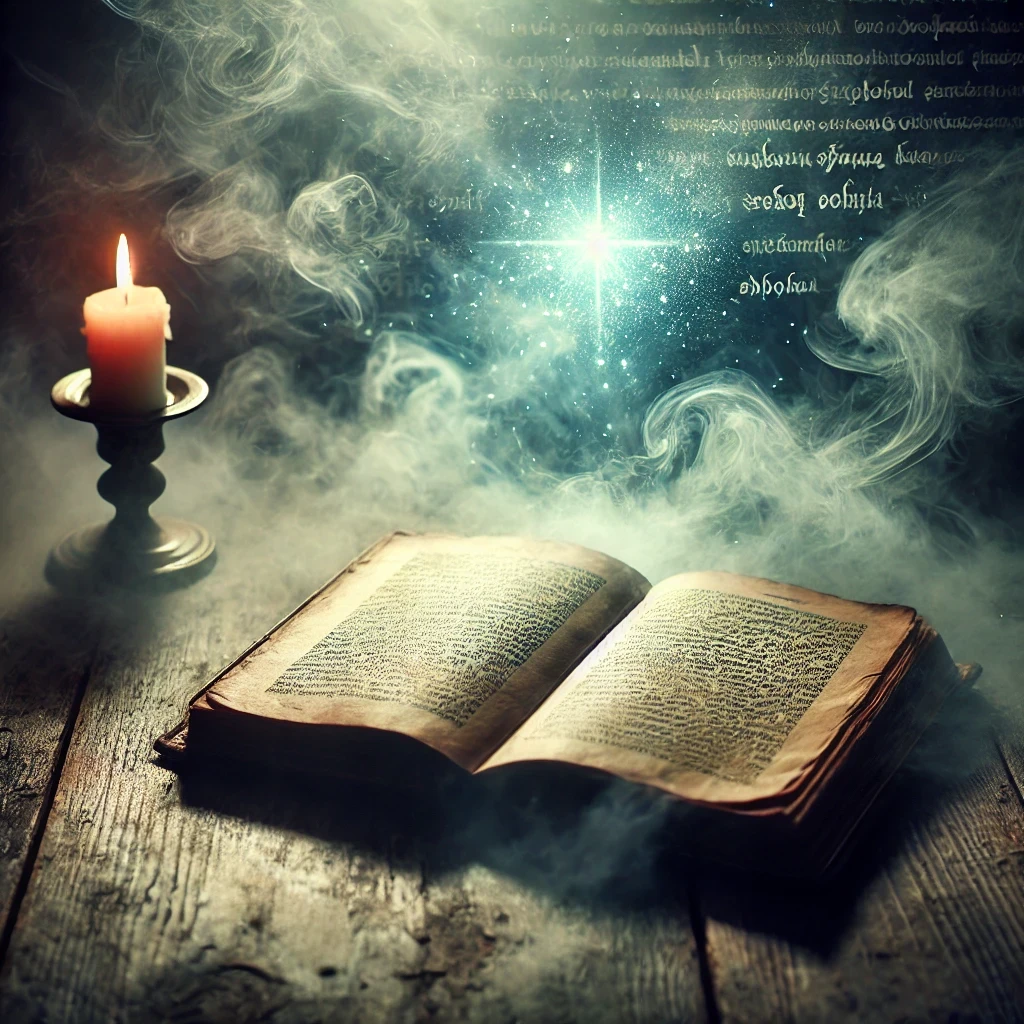The Illusion of ‘Just a Story’
Anyone can tell a story. But not everyone can make someone feel it.
In my own experience, when I realized that writing is more than just telling a story, more than a sequence of events, was during the very first drafting of Project “Runes”. I was writing a flirty scene and suddenly I felt butterflies in my stomach. I couldn’t help but smile and giggle while my fingers just flew over the keyboard. It was a dizzying feeling, like you just met your crush for the first time. I had to step back for a minute and re-read the scene again. And then it hit me – I not only wrote it, not only told what was happening. I felt it. Everything. The breath hitching, the darting eyes, the moment of tension before it snaps. I was hooked, I knew I did something right and I wanted to do more of that, to keep feeling.
But as a writer, how do you know the difference? What does one author do that the other doesn’t? And most important – how does one make it happen in their own writing? The answer is brief: one does not simply put events in order. The best stories breathe. They pulse. They demand to be felt.
The Heartbeat of a Story – What Lies Beneath
Writing project “Runes” opened my eyes to so many layers of storytelling. There are themes, emotions, subtext—things that make a story resonate beyond its plot. A story isn’t just about what happens. It’s about who it scars, who it saves, and why it matters. Stories aren’t just entertainment; they’re a way to connect with others, to understand different perspectives, to feel less alone or to escape reality, at least for a while. And often, the most powerful moments in a book aren’t spelled out—they linger beneath the surface. Mastering subtext can elevate a scene from good to unforgettable, creating tension and meaning beyond what’s on the page. Writer’s Digest has a great article on using subtext to build dramatic tension in fiction.
A book can be about a war, but the real story might be about a soldier’s struggle with guilt, loss, and survival. War is what happens to the soldier. But he is not merely walking through life and the events that follow. He is experiencing a wide range of emotions, and we readers feel it too—his guilt for not taking that shot in time, his loss of a brother in arms, his survival when that bomb fell near him. We feel that grit between our teeth, our boots sticking in the mud, that dull ache in our chests. Suddenly, he’s not just a soldier anymore. He’s someone close, someone we care about, because we share his pain. It resonates with us and strings a certain chord within.
My novel, project “Runes”, is about an exiled witch, but the real story is about resilience, self-discovery, and the cost of power. Subtext thrives in the moments when a character’s actions reveal more than their words, and few scenes in project “Runes” capture this as intensely as this pivotal confrontation between two characters.
The antagonist’s verbal attack is laced with insecurity disguised as aggression. “And you, sneaky rat, coming from who knows where, disrupted the whole household, messed with everyone’s heads…” He isn’t just angry at the protagonist—he’s threatened by her. The subtext here is that her presence has shifted the power dynamics in the castle, and this character, feeling his control slip, lashes out in an attempt to reassert himself. But the protagonist refuses to give him that satisfaction. Instead, she turns his attack back on him, delivering sharp, cutting retorts that expose how much he actually cares about her presence:
“Does my complete disinterest in your existence contradict your delusions about yourself?”
“If your opinion mattered to me, I’d already be offended.”
“And yet you’re excited and confused? Seems my job is done!”
The tension builds with every exchange until he, unable to win with words, takes the fight to the next level—by attacking her with magic.
What happens next is more than just a duel—it’s a revelation. When the protagonist retaliates, it’s not just about defending herself. “A fantastical strength pulsed through my blood. My blackened hand glowed, emitting a blue aura that flickered like it was aflame. He was now in my grasp, at my mercy, and realizing this filled me with a malicious glee.” In this moment, the protagonist experiences the seductive rush of unchecked power and the subtext shifts from self-defense to something far more dangerous—she likes the feeling of holding someone else’s fate in her hands.
This isn’t just about survival—it’s about what power does to people. The thrill of control, the intoxicating ease of turning the tables, the way her raw magic wants to take things further. And the most telling detail? It takes a piercing gaze—silent, unwavering—from someone who understands this temptation to pull her back from the edge, to snap her out of it before she crosses a line she can’t uncross. Her romantic interest doesn’t say a word, but his eyes speak volumes. He’s seen this before. He knows where this path leads.
She lets go, but the question lingers—next time, will she be able to stop herself? Or will she step willingly into the abyss?
The Reader’s Experience – Making Them Feel Something
Great writing pulls readers into the story, making them see, hear, and feel every heartbeat of the world. In project “Runes”, immersion is built through layered sensory details, tension-rich pacing, and an atmosphere so tangible it lingers even after the chapter ends. Take, for example, the same scene we just explored through the lens of subtext—the moment when the protagonist’s power flares to life and overwhelms her. The reader isn’t just told she’s using magic; they see the glow, feel the pulse in her veins, sense the heat of it, making the moment almost visceral.
Pacing, too, plays a crucial role in immersion. The scene escalates from sharp, cutting dialogue to a burst of sudden violence, before slowing just enough to let the weight of the moment settle. The silence after the storm—when her romantic interest’s unwavering gaze pulls her back—is just as heavy as the magic itself. The tension doesn’t break; it breathes. When character words aren’t enough anymore, the tension makes room for their actions. Pacing is key in that moment—dialogue and introspection fade away, leaving only the characters’ actions and their impact.
The flow can be damaged even by such an obvious thing as choreography of that duel. When I write scenes like this, I hold on to a simple rule: less is more. You don’t have to tell where every character placed their foot or what one arm is doing while the other is swinging a fist at someone’s face. Because, let’s be real—the best duels in stories stayed in our memories not because of how grand they were or how characters acted. It’s because they made us angry, scared or relieved. Less is more, because in action sequences is where the subtext shines. A single adjective, a flicker of movement, can reveal more emotion than dialogue ever could. Like in my example from project “Runes”, the romantic interest doesn’t speak, but his calm gaze juxtaposes the chaos and pulls the protagonist back from the edge. It shows the reader that he understands the temptation, the allure of power, because he’s seen it before.
The scene breathes—the dialogue, the verbal attack is where you breathe in, letting the tension rise. You hold your breath for a second—that’s where the tension reaches its peak, the characters snap and the fight begins. The action sequence lets the tension release, it’s like you are slowly breathing out. And that moment of stillness when you hold your lungs empty for a split second before breathing in again—this is that final moment, the character pulling the protagonist back from the edge.
This balance between intensity and stillness, between action and consequence, is what makes a story stay with the reader—long after the page is turned.
The Power of Character & Voice
A story isn’t just a sequence of events—it’s the characters who give those events meaning. Their thoughts, emotions, and choices shape the narrative, making it personal, raw, and real. In project “Runes”, the protagonist isn’t just reacting to external conflicts—her internal struggles drive the tension just as much. When she lashes out, when her power surges with malicious glee, it’s more than just a fight; it’s a revelation of something deeper, something simmering beneath the surface. Readers don’t just watch her battle—they feel the dangerous thrill of power alongside her. That emotional depth makes the moment hit harder because it’s not just about the magic—it’s about what it reveals about her.
Voice is what transforms storytelling from mechanical to alive. The way the protagonist processes the world—the rhythm of her thoughts, the sharpness of her retorts, the way her emotions bleed into the descriptions—is the story. In this scene, her voice isn’t just narration; it’s an extension of her identity. The way she reacts to conflict, how her anger spirals into something darker, and the way her perspective sharpens in moments of tension shapes how the reader experiences the moment. Without voice, this would just be a duel. With it, it becomes a reckoning.
You will ask: when did I realize my characters were the story? When the story took on a life of its own. The characters in my head started speaking between themselves on their own and my fingers just flew over the keyboard writing their dialogues. When their reflections and interactions built chemistry that jumped off the page and punched me in the gut, brought tears of joy and sadness. When the story in the end took a turn I had never anticipated: I thought I knew how it ends—I clearly didn’t; the characters dictated me to take a different path and I ran with it.
Final Thoughts: Why Writing Is More Than Just Telling a Story
Stories that last change people, they don’t just entertain. A great book lingers long after the final page, reshapes the way we see the world, makes us feel things we weren’t expecting. It’s not just about the twists, the action, or the breathtaking magic; it’s about the way those moments resonate. A character’s triumph, failure, or descent into darkness leaves an imprint because we’ve felt it and lived it alongside them.
The weight of a choice, the sting of betrayal, the allure of power—those emotions, when woven seamlessly into the story, become unforgettable. Readers might not remember every plot point, but they will remember the way a scene made their heart race, the way a line struck something deep within them. That’s the true legacy of a story—not just words on a page, but a world that breathes in the hearts of those who enter it.
So, why is writing more than just telling a story? Because as writers, our job isn’t just to fill pages with words—it’s to create worlds that live in the minds and hearts of others.
Have you ever written a scene that made you feel something real? Share your experience in the comments!
In darkness and wonder,
Denna Valraven

